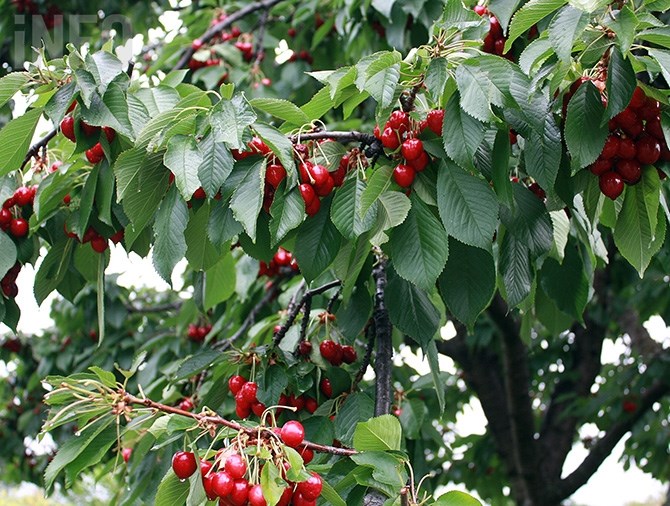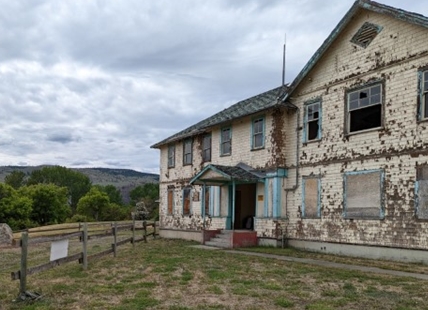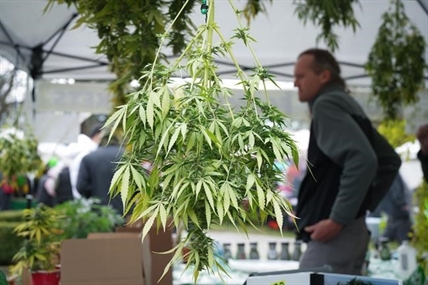Cherry acreage continues to climb as apples decline in the Okanagan

Two owners of lands just east of Kelowna are working to develop more than 1,000 acres of higher elevation cherry orchards.
That will be a significant increase over the roughly 5,000 acres the Ministry of Agriculture says are now planted in cherries.
“It is a growing trend of pushing the boundaries to higher elevations,” B.C. Cherry Association, president Sukhpaul Bal told iNFOnews.ca. “It’s a chance of getting later-maturing crops.”
Later crops mean the Okanagan industry isn’t competing directly with the huge Washington State cherry crop, which matures earlier.
“The biggest risk on those high elevation ones is the winter cold,” Bal said. “Usually, spring frost isn’t too much of an issue because they stay dormant longer up there. When they do break dormancy the weather is usually a lot more stable.”
G.P. Sandher Holdings Ltd. Company has applied to the Black Mountain Irrigation District to get water to 1,000 acres of its land, 80% of which is likely to be planted in cherries, district manager Bob Hrasko told iNFOnews.ca.
That has triggered an application by the water district to the province to extend its boundaries east of Black Knight Mountain so it can provide water to the orchards.
That is still waiting final approval by the province. In the meantime, Hrasko said, the owners are trying to get a temporary water system in place.
The other application is by Old Kelowna Ranch that covers more than 1,800 acres east of Ellison bordering on the Sunset Ranch subdivision.
In an application to the Regional District of Central Okanagan, the owners are listed as Anna Maria Shimizu and Alexander Klas Algard.
That land is in the Agricultural Land Reserve so this application, which is to consolidate and subdivide parts of it, has to go to the regional district first.
The plan there is to build roads connecting to the Sunset Ranch and Upper Booth Road and there could be housing for temporary farm workers.
It also includes plans to bring in fill to enhance the quality of the soil on 400 acres of the ranch since the land now is mostly suited to grazing.
This is an area, just out of city limits, that has been subject to massive amounts of fill dumping in recent years.
READ MORE: Massive amounts of soil dumping will continue in rural Central Okanagan — for now
The owners will have to file a different application with the Agricultural Land Commission before that can be done. That goes to the regional district first. Staff there could not say how much fill is needed since that application isn’t final yet.
Black Mountain Irrigation District could also supply water through a gravity feed to the site, although some of the land is within the Glenmore-Ellison Irrigation District boundaries.
Once the cherry trees are planted, it generally takes three to four years to start getting a crop and six years for a full crop, Bal said.
This is part of a growing trend towards expanding the cherry industry into new lands. But the expansion also comes at the expense of apple orchards.
“There definitely is a decline in apple acreage due to the tough market conditions they’ve been facing and weather issues with the heat dome,” Sukhpaul Bal, president of the B.C. Cherry Association and former apple grower, told iNFOnews.ca.
The heat dome broke all temperature records in June 2021, peaking at 45.7 C in Kelowna on June 29.
READ MORE: One more day of the heat wave pushes Okanagan and Canadian records even higher
“It (heat dome) had a couple of seasons of effect, damaging the crop that was on the trees at the time," Bal said. "Then, where the buds are forming for the following year, that process is also taking place in the summer months so, I believe, they had carryover issues.”
While there is risk to growing cherries as well, and last summer was an example where there was a light crop, there’s a growing and lucrative demand for the product.
Last summer the association started selling into South Korea and that market is expected to grow this year. There is also an increased focus on domestic markets.
While the number of acres planted in cherries is steadily growing it’s the opposite story with apples.
READ MORE: The Okanagan has only one-third the apple acreage from 30 years ago
The B.C. Fruit Growers Association did not respond to calls from iNFOnews.ca with the latest number of acres planted in apples.
But two years ago, association general manager Glen Lucas told iNFOnews.ca that the apple acreage had fallen by 10% from 2019 to 2021 to 7,500 acres. In 1992, there were 20,000 acres of apples in the Valley.
That's for all of B.C.
The BC Ministry of Agriculture reported, in an email to iNFOnews.ca, the the acreage for apples in B.C. fell to 7,454 in 2022 from 8,728 in 2018.
That's a drop of almost 1,300 acres over five years. Almost 1,000 of those losses were in the Okanagan Valley, dropping acreage there to 5,665 acres as of last year.
To contact a reporter for this story, email Rob Munro or call 250-808-0143 or email the editor. You can also submit photos, videos or news tips to the newsroom and be entered to win a monthly prize draw.
We welcome your comments and opinions on our stories but play nice. We won't censor or delete comments unless they contain off-topic statements or links, unnecessary vulgarity, false facts, spam or obviously fake profiles. If you have any concerns about what you see in comments, email the editor in the link above.








